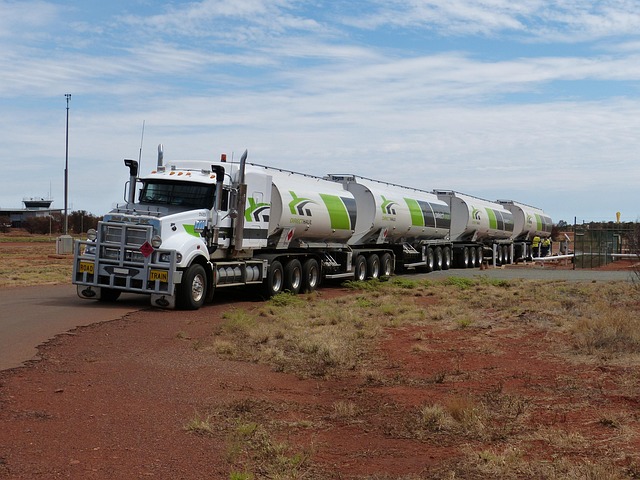Registering a car in California involves understanding a meticulous process that ensures vehicle safety and roadworthiness. This comprehensive guide breaks down each step, from preparing for the VIN verification (a crucial component of the registration) to compiling the necessary documents. We’ll navigate you through the official procedures, ensuring your California car registration is a smooth, efficient experience. Key SEO terms like VIN verification are seamlessly integrated, offering valuable insights tailored for the Golden State.
- Understanding the California Car Registration Process
- Preparing for Vin Verification: What You Need to Know
- Steps to Register a Vehicle in California: A Comprehensive Guide
- Documents Required for California Car Registration
- After Registration: Important Follow-Up Steps and Considerations
Understanding the California Car Registration Process

Understanding the California Car Registration Process
Registering a car in California involves several key steps, ensuring your vehicle is legally operating on state roads. The process begins with gathering essential documents and information, including proof of ownership, insurance, and identification. Once prepared, you’ll need to visit a local Department of Motor Vehicles (DMV) field office or use their online services for registration. A crucial part of this process is the vin verification (Vehicle Identification Number), which confirms your car’s identity and history. This step can be completed easily through a mobile vin verifier or by conducting a vin inspection, ensuring all information matches and the vehicle isn’t stolen or has any outstanding issues.
After successful vin verification, you’ll pay the required registration fees, which vary based on vehicle type and age. Upon approval, you’ll receive your California car registration documents, updating your vehicle’s official record in the state. It’s crucial to keep these documents up-to-date and readily available for future reference or when selling your vehicle.
Preparing for Vin Verification: What You Need to Know

Before you begin the registration process, it’s crucial to understand the importance of a Vehicle Identification Number (VIN) verification. This step is a critical part of ensuring your car’s history is accurately represented and checked against any potential issues or discrepancies. When preparing for this process, gather all necessary documents related to your vehicle, including its title, registration papers, insurance information, and proof of ownership. Additionally, ensure you have the correct identification to match the details on file with the DMV.
A key aspect of this preparation is considering whether a mobile VIN verifier or a traditional vin inspection is more suitable for your needs. With modern technology, there are options available for convenient and efficient vin verification right from the comfort of your location. These services can be particularly beneficial if you’re busy or have mobility issues, as they eliminate the need to visit a DMV office or wait in lines for an inspection.
Steps to Register a Vehicle in California: A Comprehensive Guide

Registering a car in California involves several straightforward steps. First, gather all necessary documents, including your driver’s license, proof of insurance, and vehicle registration from any previous state. Next, visit the California Department of Motor Vehicles (DMV) website to determine the specific fees and required forms for your vehicle type.
Once prepared, head to a DMV field office or use their online services. You’ll need to complete an Application for Vehicle Registration form and provide proof of identity and residency. A crucial part of this process is the vin verification, which ensures the vehicle’s identification number (VIN) is accurate and matches the make and model on file. Consider using a mobile vin verifier for a quick and convenient vin inspection before submitting your application to avoid delays.
Documents Required for California Car Registration

When registering your car in California, you’ll need several key documents to ensure a smooth process. One crucial document is the Vehicle Identification Number (VIN) verification report, which can be obtained through a mobile VIN inspection or by visiting a California Department of Motor Vehicles (DMV) office. This step is essential as it confirms the vehicle’s history and ensures it meets safety standards.
Additionally, you’ll require proof of ownership, typically a title document, along with valid identification such as a driver’s license. Insurance papers, including your policy number and coverage details, are also mandatory. For out-of-state vehicles, a “Certificate of Title” or equivalent document from the state where the car was previously registered is necessary. These documents streamline the registration process, making it easier for both you and the California DMV to verify the vehicle’s information.
After Registration: Important Follow-Up Steps and Considerations

After registering your vehicle in California, there are several crucial follow-up steps to ensure a smooth ownership experience. One vital consideration is confirming the Vehicle Identification Number (VIN) verification. This process ensures that the details on your registration documents match the actual vehicle. Using a mobile VIN verifier or conducting a mobile VIN inspection can simplify this task, allowing you to verify the VIN’s accuracy with ease.
Additionally, keeping records of all registration-related documents and receipts is essential. These include proof of insurance, emission test results, and any payments made. Storing these documents securely ensures compliance and can be beneficial when dealing with future transactions or addressing any administrative issues that may arise.
Registering a car in California is a straightforward process once you understand the requirements. By preparing the necessary documents, undergoing vin verification, and following the step-by-step guide outlined in this article, you can ensure a smooth registration experience. Remember to keep your vehicle’s registration up-to-date for legal compliance and to avoid any potential issues with California’s Department of Motor Vehicles (DMV).



